Giant Groundsels, scientifically known as Dendrosenecio kilimanjari, are prehistoric plants that can be found atop Mount Kilimanjaro in Tanzania. They evolved over a million years ago in areas with altitudes above 14,000 feet, where they adapted to survive in sub-zero temperatures. These plants can grow as tall as 30 feet.
Despite being part of the dandelion family, Giant Groundsels have a unique appearance that resembles a combination of a pineapple and a cactus. The plant’s large, dead leaves help insulate its stem, which can also close when temperatures drop too low.
The Giant Groundsel has remarkable adaptations that enable it to thrive in the alpine environment. Its dead leaves fold over the trunk, providing insulation. The pith of its stem stores water, and it secretes special fluids that help it withstand freezing temperatures. Like the Lobelia deckenii, its leaves close when it gets cold to protect against frost.
Giant Groundsels of Kilimanjaro: The Unique Flora of Mount Kilimanjaro
Mount Kilimanjaro is not only a popular trekking destination but also a unique ecosystem with diverse flora and fauna. The giant groundsels are one of the most fascinating plant species that can be found on this mountain. These towering plants can grow up to 5 meters tall and have a unique appearance that sets them apart from other plant species.
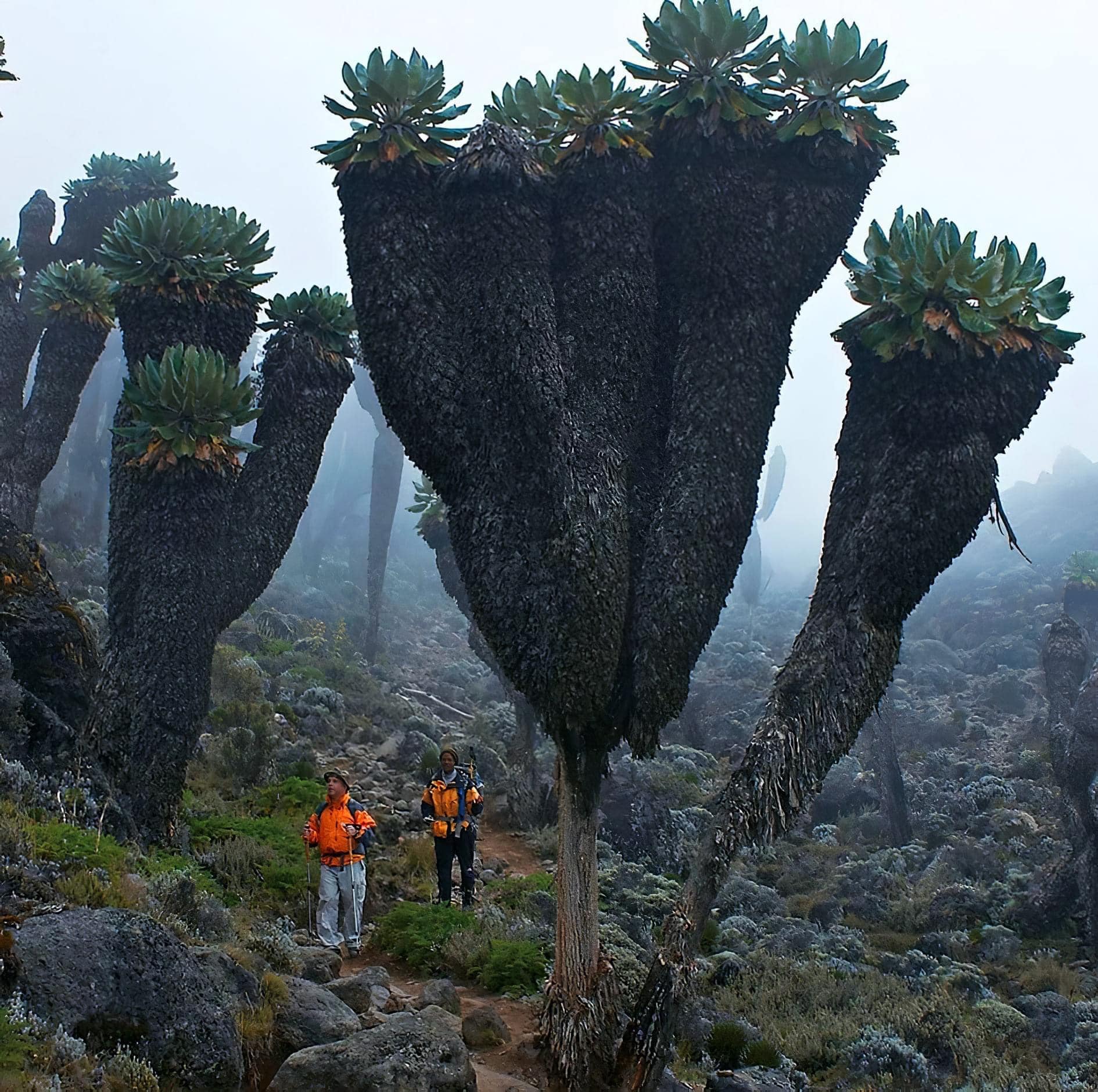 In this article, we will explore the giant groundsels of Kilimanjaro and learn more about their biology, habitat, and importance in the mountain’s ecosystem.
In this article, we will explore the giant groundsels of Kilimanjaro and learn more about their biology, habitat, and importance in the mountain’s ecosystem.
The Biology of Giant Groundsels
Giant groundsels are members of the Senecio genus, which includes more than 1,000 species of flowering plants. They are also known as dendrosenecios, which means “tree-like Senecios,” due to their tree-like appearance.
Giant groundsels have a unique adaptation to the harsh conditions of Mount Kilimanjaro. They are able to store water in their succulent stems and leaves, which allows them to survive the long dry seasons on the mountain. Additionally, their hairy leaves help to reduce water loss through transpiration.
Giant groundsels produce large yellow flowers, which are pollinated by insects such as bees and flies. After pollination, the flowers develop into fluffy seed heads, which are easily carried by the wind to new locations.
 Which Kilimanjaro Routes can you see these prehistoric plants?
Which Kilimanjaro Routes can you see these prehistoric plants?
Dendrosenecio kilimanjari is exclusive to Kilimanjaro and is usually found in the middle altitudes on the Shira Plateau and around Barranco Camp. These plants grow slowly but can reach heights of up to 30 feet. You have a better chance of seeing these prehistoric plants when you use the Northern Circuit, Lemosho, and Machame Routes.
The Habitat of Giant Groundsels
Giant groundsels are endemic to Mount Kilimanjaro and can be found in several habitats on the mountain, including the moorland and alpine desert zones. These plants thrive in rocky and well-drained soil, and they are often found growing in large clusters.
One of the most impressive sights on Mount Kilimanjaro is the Lava Tower, a large rock formation that is surrounded by a field of giant groundsels. This unique landscape is a popular destination for trekkers who are interested in the mountain’s flora and fauna.
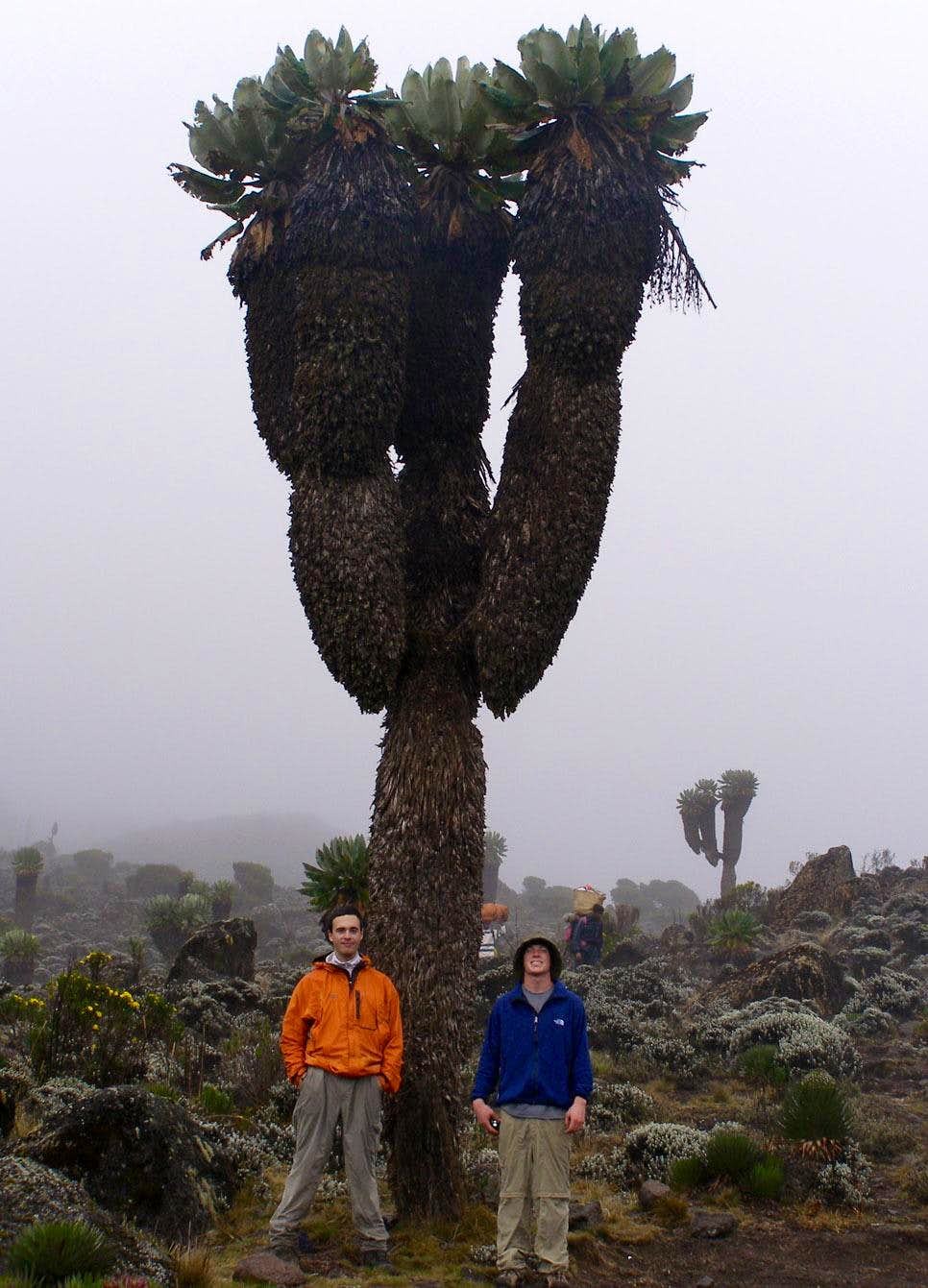
The Importance of Giant Groundsels
Giant groundsels play an important role in the ecosystem of Mount Kilimanjaro. They provide food and shelter for a variety of animals, including birds and small mammals. Additionally, their deep roots help to stabilize the soil and prevent erosion on the mountain.
Despite their importance, giant groundsels are facing several threats, including habitat destruction and climate change. The increasing number of trekkers on the mountain also poses a risk to these plants, as they can be easily damaged by trampling.
Visiting the Giant Groundsels of Kilimanjaro
If you are planning a trek to Mount Kilimanjaro, make sure to keep an eye out for the giant groundsels along the way. These impressive plants are a unique sight and a testament to the mountain’s rich biodiversity.
When visiting the giant groundsels, it is important to follow responsible trekking practices to ensure the protection of these plants and their habitat. This includes staying on designated trails and avoiding touching or damaging the plants.
Dendrosenecio kilimanjari is a huge groundsel found below 4,000 meters (13,000 feet) on Mount Kilimanjaro in Africa.
It was initially classified as Senecio kilimanjari, but a recent botanical reclassification separated some species previously classified as Senecio, placing it and several other species in the new genus Dendroseneco. Both genera are members of the Asteraceae family. Around a million years ago, the huge groundsels of the genus Dendrosenecio originated from a Senecio that established itself on Mount Kilimanjaro, with those who survived changing into Dendrosenecio kilimanjari. This later colonized neighboring mountains by various methods – the normal distance for wind propagation of seeds is a few metres – and these isolated populations evolved differently from the parent population, resulting in the creation of new species.
 Senecio Plants of Kilimanjaro
Senecio Plants of Kilimanjaro
The giant groundsels of Kilimanjaro are a fascinating example of the unique flora that can be found on this mountain. Their towering height, succulent leaves, and yellow flowers make them a distinctive sight, and their importance in the mountain’s ecosystem cannot be overstated. By following responsible trekking practices, we can help to ensure the protection of these plants and their habitat for generations to come.
![]()

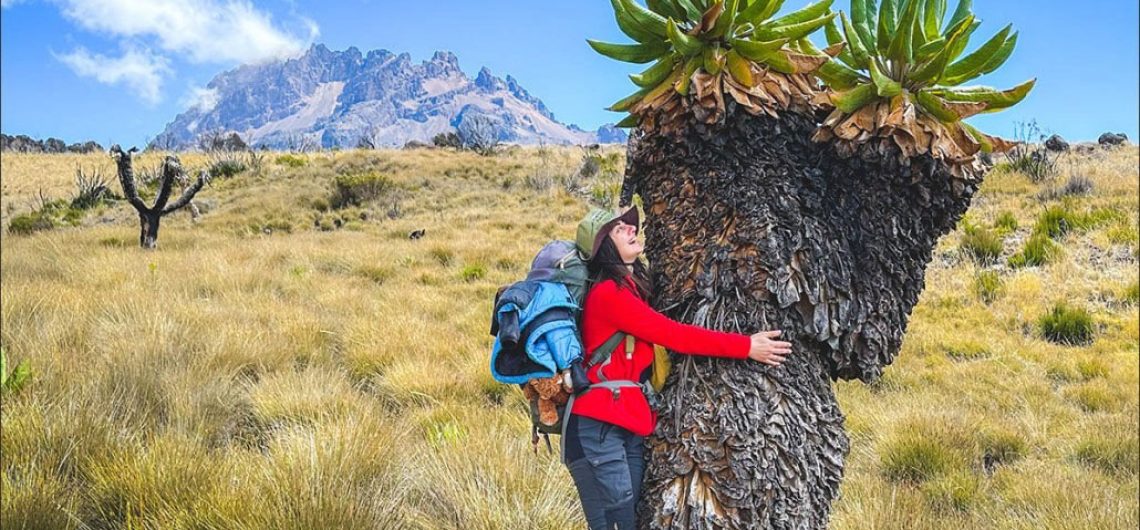
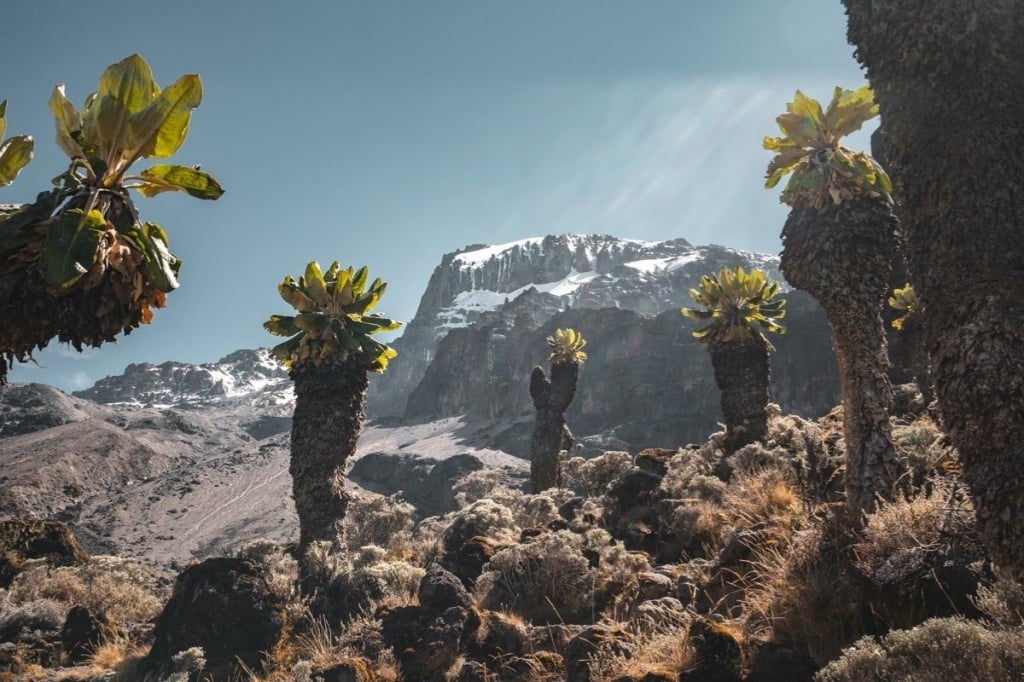 Which Kilimanjaro Routes can you see these prehistoric plants?
Which Kilimanjaro Routes can you see these prehistoric plants?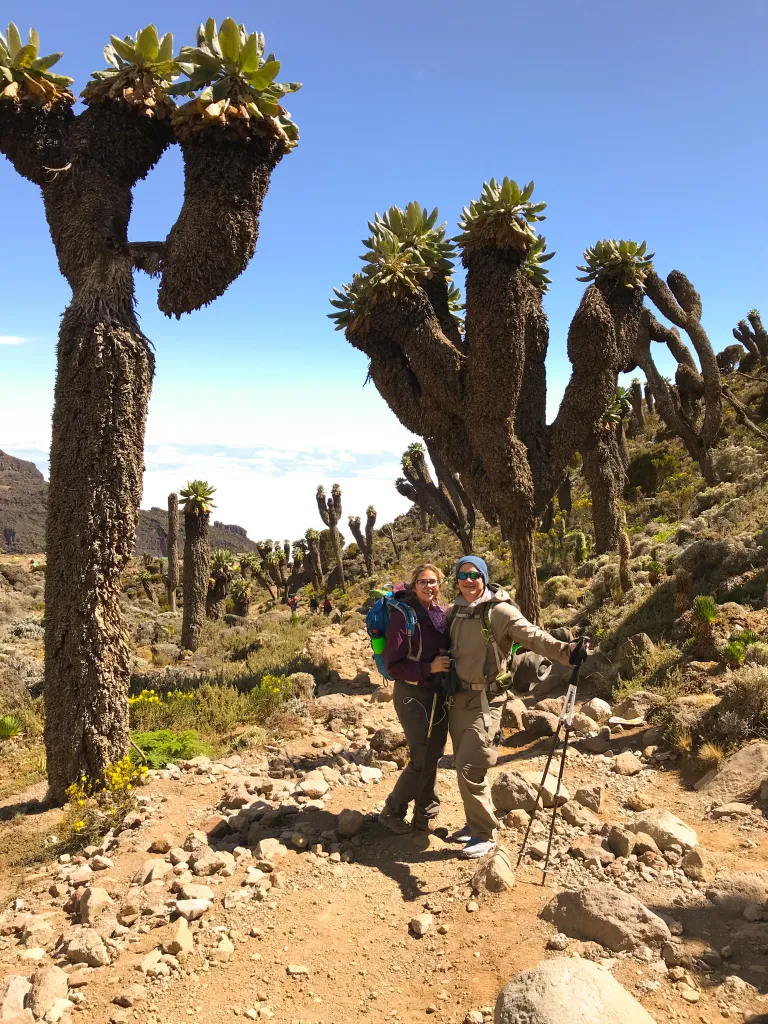 Senecio Plants of Kilimanjaro
Senecio Plants of Kilimanjaro